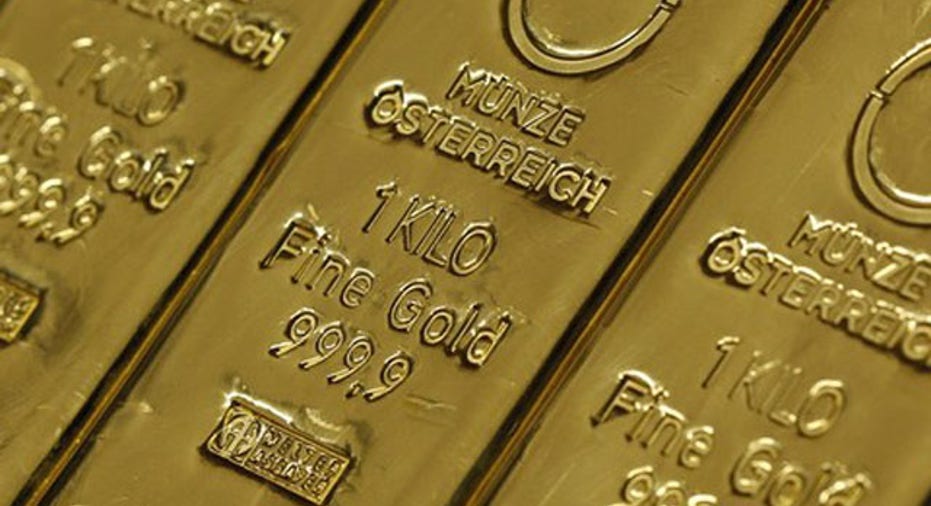The Gold Bubble Has Finally Burst. Or Has It?

The gold bubble had to burst. It was just a matter of time. Turn on the television recently, especially late at night when advertising rates are cheap, and there’s some toothy huckster imploring viewers to buy gold, buy gold, BUY GOLD!
Fear, both real and imagined, pushed the price of the precious metal to an all-time high (not adjusted for inflation) of $1,920 earlier this month and the sky appeared to be the limit.
One Swiss money manager recently predicted gold could top $6,200 an ounce if the most dire of economic forecasts comes to fruition. That is a prolonged economic downturn marked by bank failures and rampant global unemployment.
Predictions like that often signal the end of a run. Remember toward the end of the Internet craze of the late '90s when predictions of the Dow Jones Industrial Average making a straight shot to 30,000 were taken seriously? How’d that work out?
Conventional wisdom has held that the "smart money" -- hedge funds, institutional money managers and the like -- have been closely watching gold’s astronomical rise over the past decade and keeping a close eye out for the top.
These folks are believed to have contributed more than their fair share to gold’s surge from $250 an ounce in 2001 to its recent high, all the while biding their time and waiting for the bubble to burst.
Through a combination of careful hedging, timely shorting and simply reaping the profits borne of an oversold commodity, the professional traders stood to make a killing at the expense of individual investors who listened to those late-night commercials but got in too late.
That scenario seemed to be taking shape on Friday when gold began a steep plunge that extended into Monday’s session, when it closed down $45 an ounce at $1,594.80. In two days the precious metal has fallen nearly 9%, and it’s down about 20% from its high in early September.
Now is when the smart money was expected show its acumen by getting out and taking profits, pushing gold into a downward spiral for the foreseeable future and back to a level more in line with other commodities.
But not so fast. Analyst Stephen Schork with the Schork Group in Philadelphia believes that may have already happened.
Schork said the sharp selloff of the past two days was indeed “overdue.” But he believes the selloff has brought gold back into its rightful correlative relationship with another important commodity, oil.
In early September, an ounce of gold at about $1,900 was worth about 17 ½ barrels of Brent crude oil, according to Schork. An ounce is now worth about 15 ½ barrels, or “right back to the historical mean,” he said.
“It’s now back into a normal relationship with oil,” Schork explained.
Consequently, it may not go any lower. Indeed, the price of gold is soaring by more than $60 an ounce on Tuesday.
Friday’s selling was prompted in large part on fears that European central banks, which had been buying up gold over the past two years (also contributing to the historic run-up), may start selling to cover the cost of a bailout to ward off a Greek default and a major escalation of the European debt crisis.
“It makes sense if you think about it. Europe added to its gold position over the past two years. Now they need to raise money some way or another to pay for the bailout and that’s one way to do it,” said Phil Flynn, a commodities analyst at PFGBest in Chicago.
Amid the myriad fears swirling through global markets, investors also sought safety in the U.S. dollar, pushing it to its highest level in eight months against the euro. “People were running to cash,” said Flynn, explaining the resurgent strength of the dollar.
But barring a “deflationary death spiral,” gold’s accelerated bear market is probably temporary, according to Flynn.
Kevin Kerr, president of Kerr Trading International and senior analyst at Money and Markets.com, agrees.
“Gold is in panic liquidation mode, which is typically followed by bargain hunting and an even bigger rally eventually,” Kerr predicted.
Kerr, for one, is not convinced that the dollar represents a safer investment than gold.
“The idea that the dollar is some sort of safe haven anymore is not backed up by any facts. Interest rates remain at zero, fundamentals are awful and the only real good news for the dollar is that the euro is imploding faster, which is hardly a reason to buy it,” he said.
Maybe those late night commercial guys were right all along.



















